How can you make a bathroom more relaxing? 10 clever ways to a calming (and stylish) space
Discover the expert strategies for making a bathroom into a soothing sanctuary


Emphasis on functionality? Then you need to know how to make a bathroom more relaxing. A room that‘s calming prepares you for the day ahead and allows you to wind down at its end in readiness for a good night’s sleep.
Because they’re such important and in-demand spaces, bathroom ideas can sometimes deliver in practical terms, while falling short when it comes to creating comfort. But both excellent functionality and a soothing atmosphere are vital, and it is possible to achieve both.
We’ve put together the top ways to make a bathroom more relaxing from the experts here to inspire you to turn the room into a sanctuary.
10 ways to make a bathroom more relaxing
Whether it’s a shared family bathroom, the primary bathroom, or a guest bathroom, a room that’s all about its function doesn’t live up to its potential. A bathroom can be the relaxing space it should with the right approach – and this is what you need to know.
1. Avoid clutter
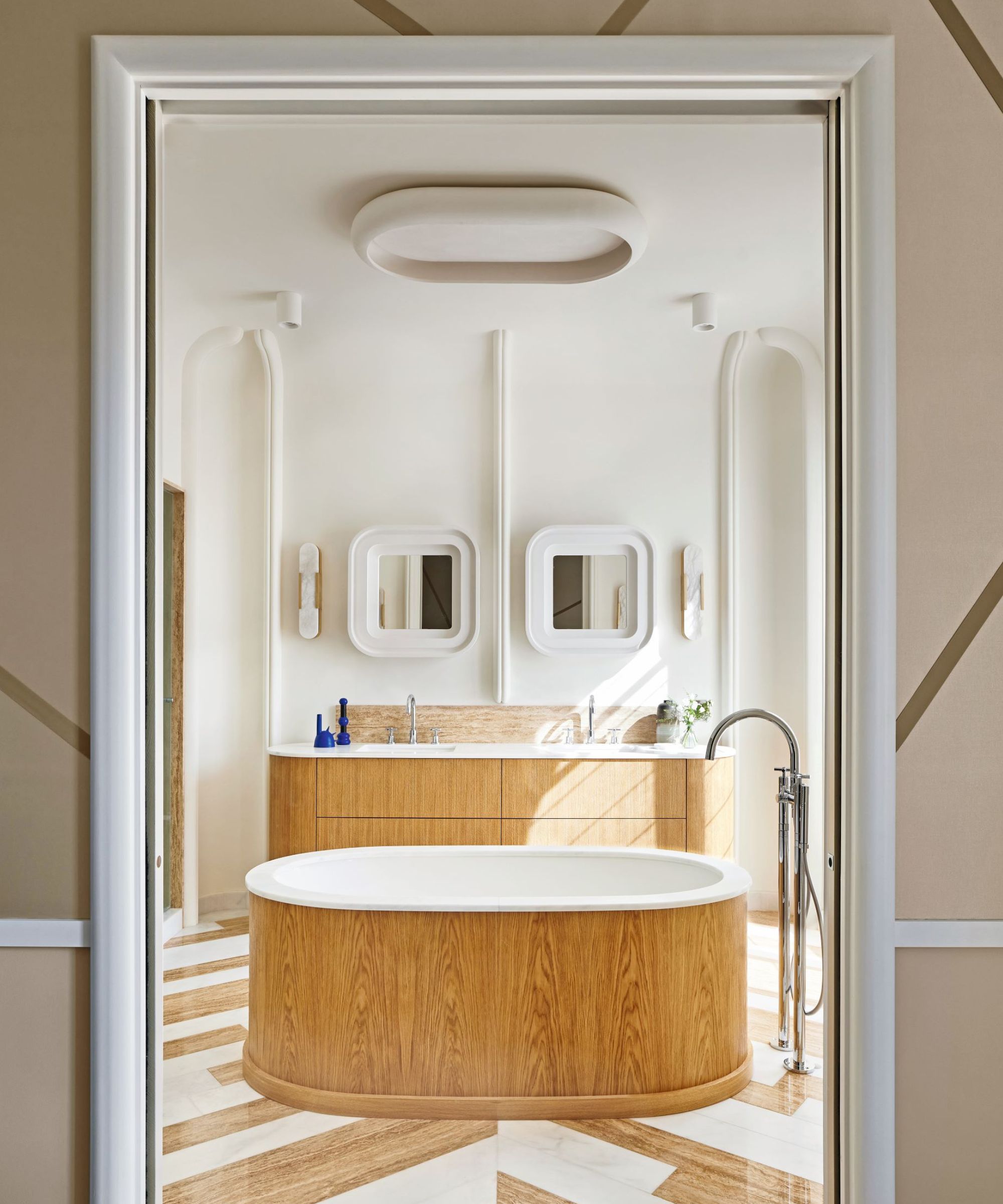
For a soothing space, declutter, says interior designer Darlene Molnar. ‘Bathrooms inevitably accumulate toiletries, worn out towels, etc. By streamlining products you reduce visual clutter which is just plain stressful,’ she says.
Organizing a bathroom effectively will create a place for everything you do need to keep in the room so that it’s accessible but doesn’t ruin the room’s calm ambiance.
2. Employ color psychology
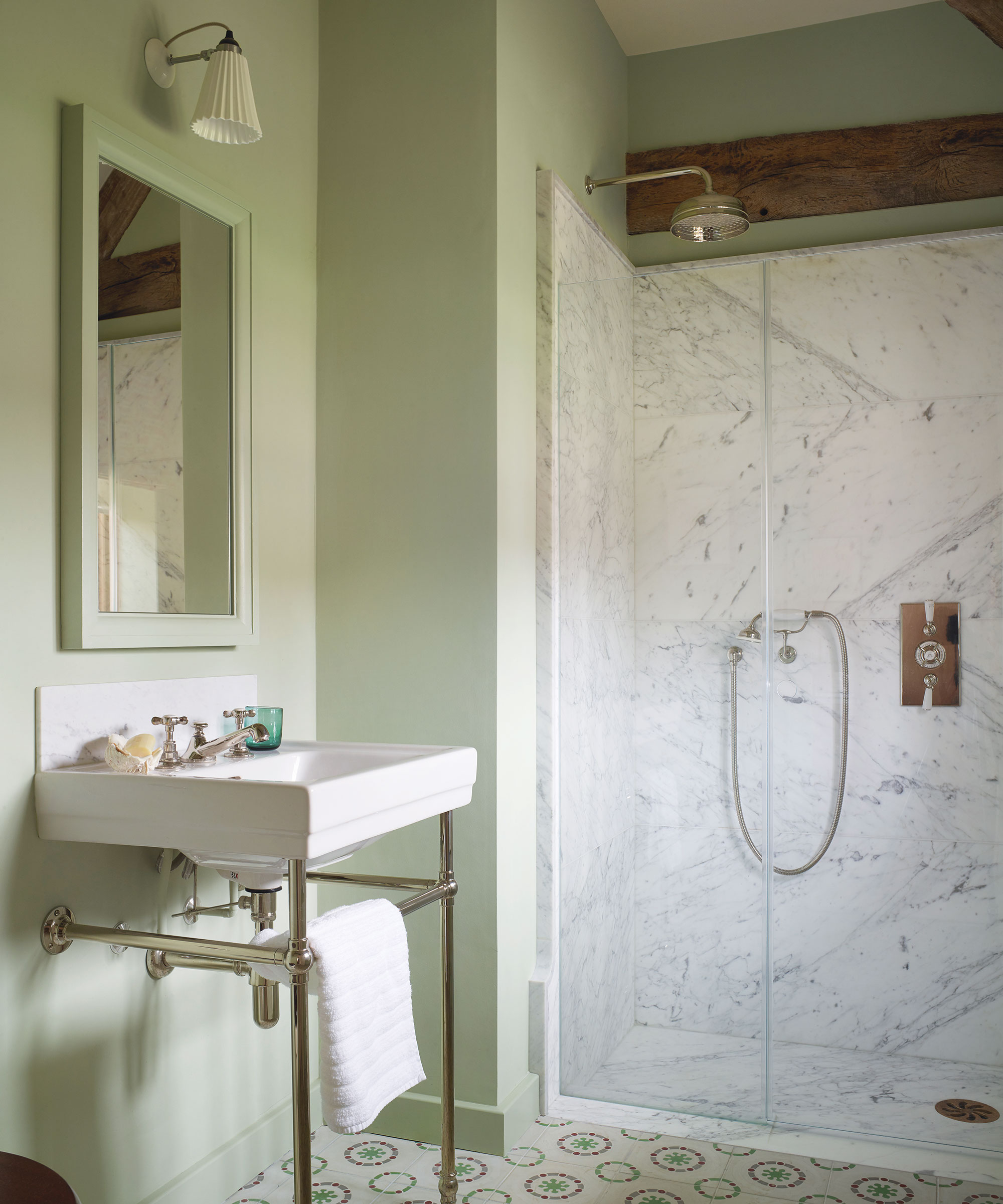
Color influences mood, so pick a bathroom color palette with relaxation in mind. ‘Color psychology shows earth tones like varying shades of blue, purple and green to be especially conducive to relaxation,’ says Keely Smith, lead interior designer at JD Elite Interiors.
Design expertise in your inbox – from inspiring decorating ideas and beautiful celebrity homes to practical gardening advice and shopping round-ups.
‘I find a light sage hue particularly serene when paired with natural textures like wood for an organic ambiance. This brings to mind images of a tranquil garden oasis.’
3. Opt for adjustable lighting
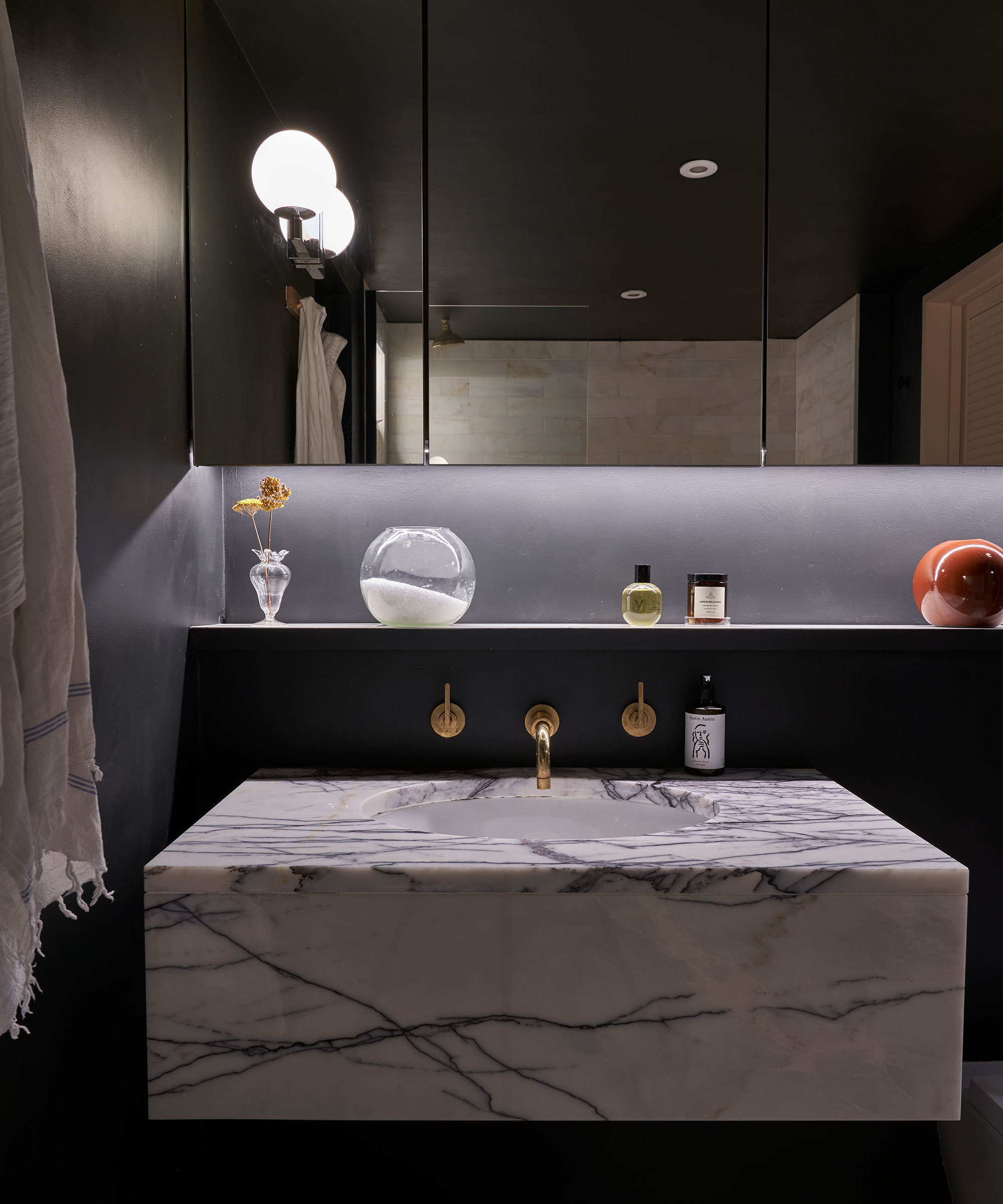
Bathroom lighting is key to the mood of the room and can change the atmosphere from get-up-and-go to relax-and-unwind.
‘Adjustable lighting, like dimmers and soft LED lights, has become a staple for creating a spa-like experience, and pairing it with the gentle glow of scented candles – my favorites being lavender and chamomile – adds an extra layer of tranquility,’ says interior designer Arpit Jain of McLine Studios.
4. Think texture

A bathroom necessarily contains many hard surfaces so focus on adding in contrasting, tactile elements. ‘Invest in plush towels, bathrobes, and soft bath mats,’ recommends Mina Lisanin, founder and international award-winning designer of ML Interiors in NYC. ‘High-quality, luxurious textures can add a touch of comfort and contribute to the overall relaxation experience.’
And while we’re talking towels, Julia Longchamps, principal at Julia Longchamps Design, suggests focusing on folding. ‘Folded towels feel like a luxury hotel,’ she says. ‘The little touches like folded towels evoke a pampered look and feel. Another option is to roll your towels. Hand towels are great for rolling. I usually have a stack of two to three for a hand towel and two for a bath towel.
‘I am constantly on the hunt for the perfect bath towel,’ she adds. ‘Right now, I’m loving a Turkish cotton blend. The little extra details in the design and styling make you feel like you have escaped to somewhere you can unwind and relax.’
5. Bring in stone

Natural stone is a top choice for a bathroom that’s all about spa-style relaxation. But don’t just focus on incorporating the material: think about its color, too. These are the options Rassan Grant, director at Norstone US suggests. ‘Opt for soft whites, beige, grays, and blues found in nature,’ he says. ‘These colors promote calmness and tranquility.’
But don’t rule out more colorful stone. ‘Consider green stones like marble or serpentine for a touch of nature’s serenity,’ he advises.
And think textural contrast, too. ‘Pair smooth stone surfaces with rougher textured elements like pebbles or tiles to add visual interest and depth,’ he adds.
Where to use stone? Consider stone flooring, but choose carefully to keep the room’s users safe. ‘Stone floors feel naturally cool and luxurious underfoot, adding a spa-like touch,’ says Rassan. ‘Polished surfaces can be slippery, so consider textured finishes for safety.’
Try it for walls, too. ‘Stone walls add timeless elegance and create a feeling of enclosure,’ he says. ‘Use large slabs for a seamless look, or create a mosaic with smaller pieces.’
The shower or bathtub surround is another place to incorporate stone. ‘Stone surrounds improve the bathing experience, making it feel like a mini-retreat,’ Rassan says. ‘Consider natural patterns or veins for a touch of the outdoors.’
6. Add natural elements

Stone isn’t the only ingredient that can make a bathroom a more soothing space to enjoy. ‘The addition of natural elements, such as plants and wooden accents, brings a touch of nature indoors, contributing to an overall sense of peace,’ says Arpit Jain.
These are choices Keely Smith endorses, too. ‘Incorporating actual natural elements such as stone accents, plant life or bamboo artifacts provides wellness benefits and connects one to the outdoors even indoors,’ she says. ‘Live greenery and delicate botanical accessories add soothing aesthetic appeal as well as aromatherapy.’
Since the bathroom is a humid environment, be sure to choose the best bathroom plants, which will thrive in the conditions.
Darlene Molnar agrees that wood is an ideal material to introduce into the design. ‘Incorporating wood into a minimalist bathroom is another way to bring in a bit of cozy comfort to an otherwise stark bathroom. Here, the wooden bathmat, leaning ladder, and hand towel rings add visual warmth,’ she says of the room above.
7. Employ aromatherapy
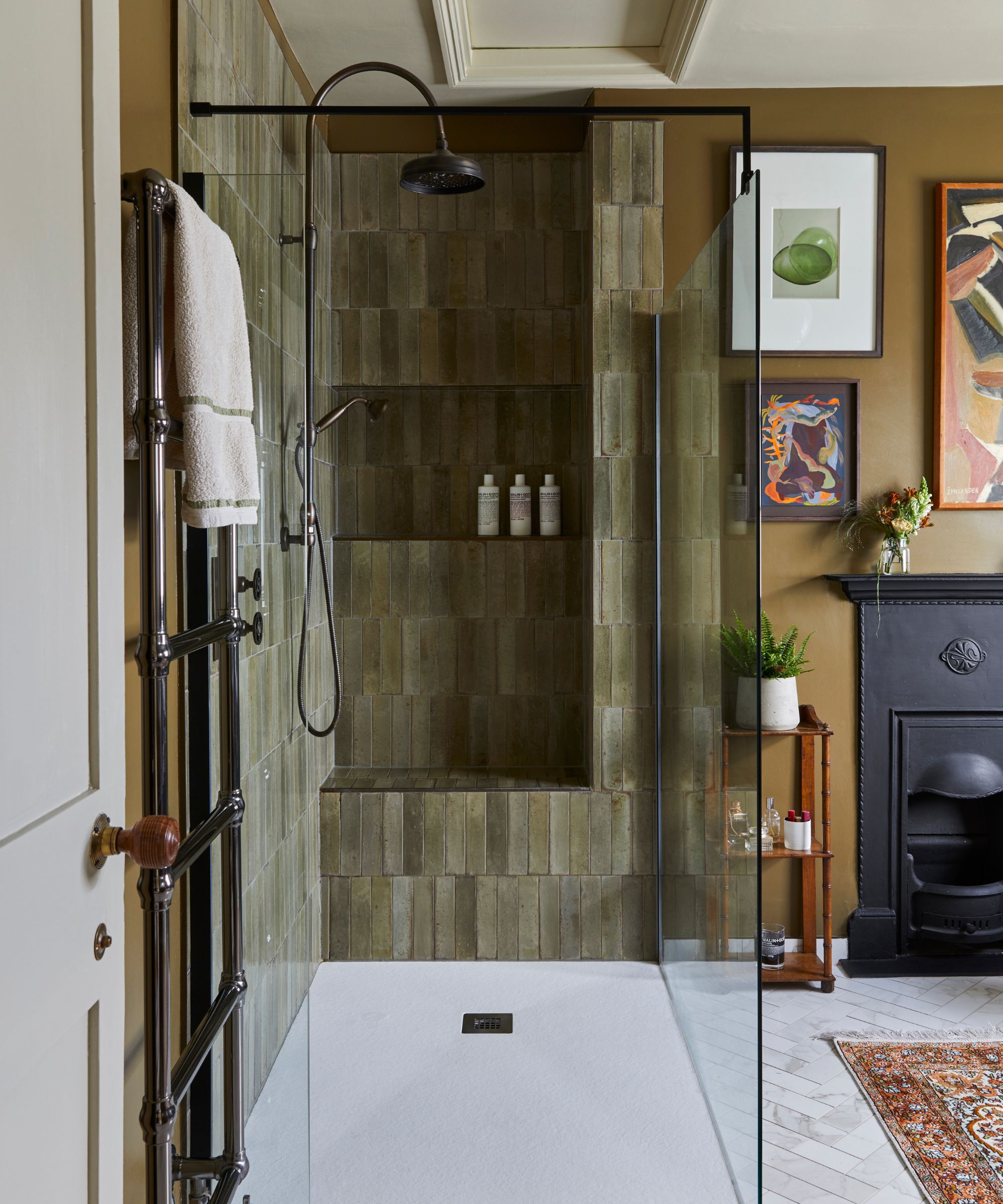
We’ve talked about aromatherapy in relation to plants for the bathroom, but there are other ways to enjoy its potential. ‘Introduce aromatherapy through scented candles, essential oil diffusers, or bath salts,’ says Mina Lisanin. ‘Scents like lavender, chamomile, and eucalyptus are known for their calming properties.’
8. Plan for relaxation
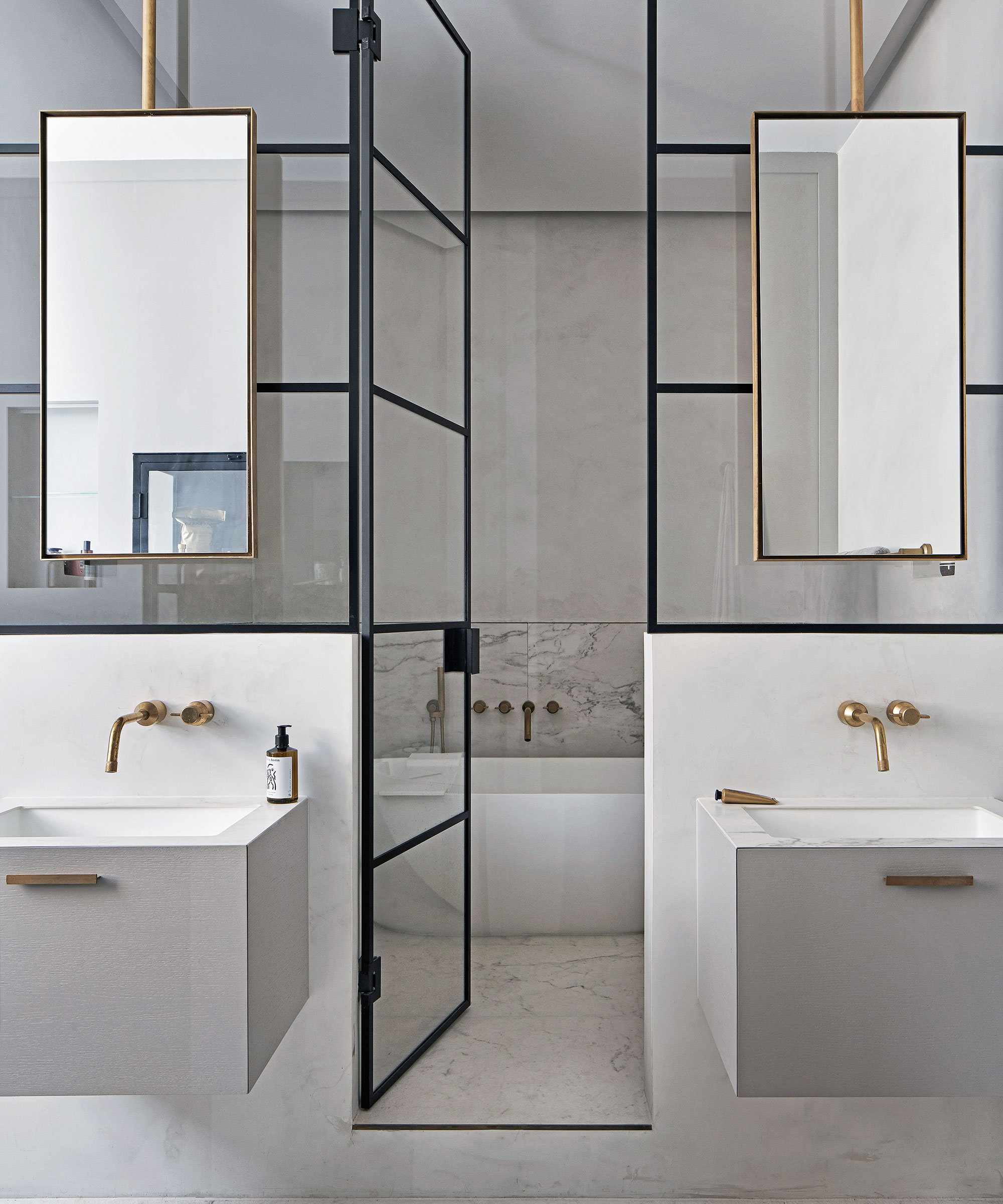
If you’re designing a bathroom, there’s the opportunity to build in elements that make it a soothing retreat. ‘If in the planning stages and the bathroom layout is flexible, consider creating a nook area for the bathtub,’ says Darlene Molnar. ‘It creates a sense of enclosure without being totally closed off.’
‘Another tip to consider when planning a bathroom design is to avoid using too many types of finishes – lots of different tiles creates a lot of visual noise,’ she continues. ‘I try to keep it to two to three different finishes at the most.’
9. Swap the door

Why does swapping a door have the potential to make a bathroom more relaxing? The answer is improved soundproofing. ‘One of the keys to a more relaxing bathroom is creating a serene atmosphere free from distractions and household noise,’ says Jennifer Renaud, SVP at Masonite. ‘Replacing your old bathroom door with a beautiful new solid core door can help transform your bathroom into a spa-like retreat.’
10. Focus on the senses
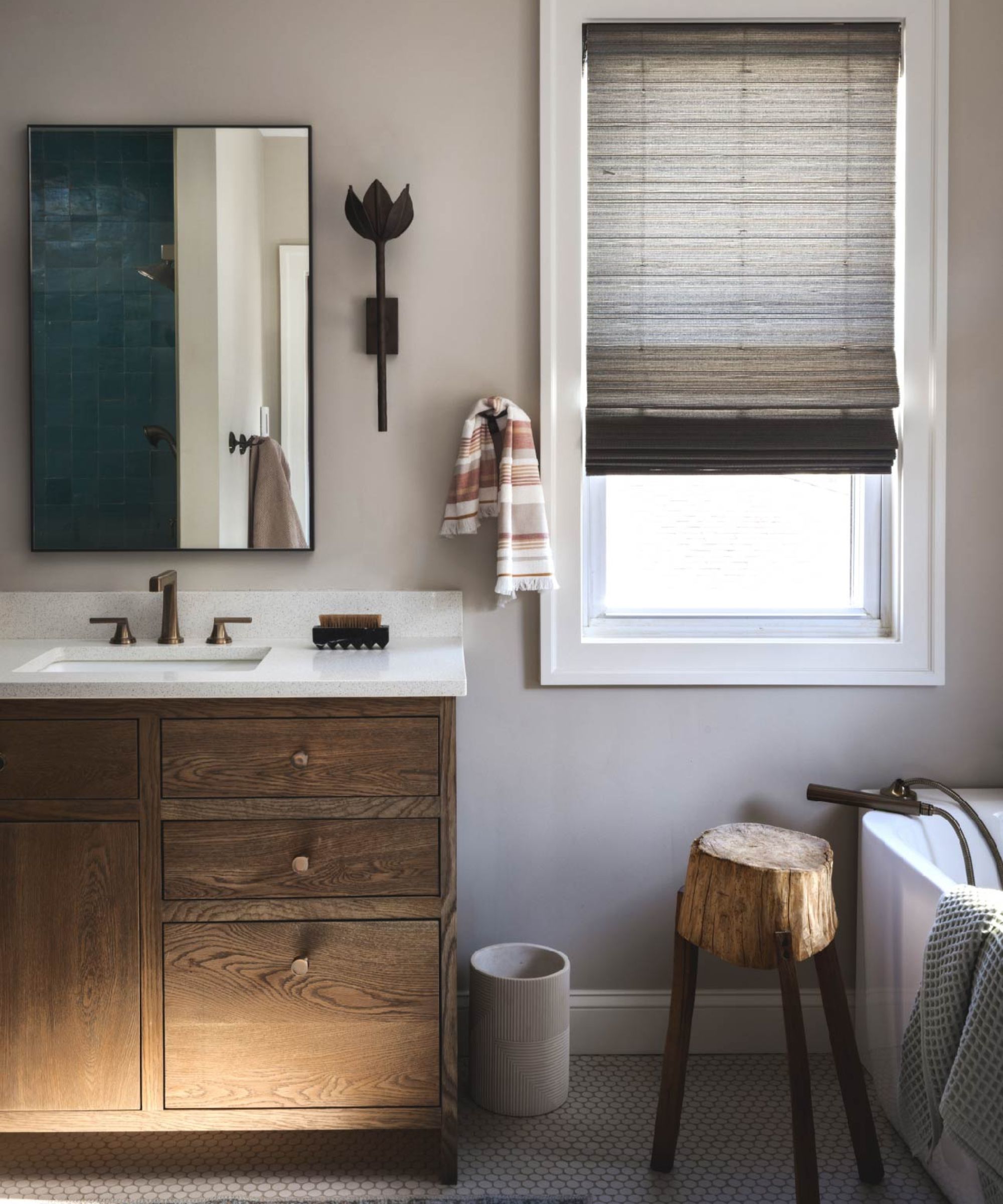
A bathroom that feels relaxing focuses on the senses, according to interior designer Kristen Mills, founder of Inch Projects. ‘For example, with sound, incorporating music (even if not built into a custom space, you can add with Sonos or portable speaker) and catering to your personal choice of music helps you unwind from the day,’ she explains.
‘Touch revolves around incorporating soft surfaces in a “hard space” – Turkish towels and rugs bring warmth for yourself and your feet,’ she continues. ‘Smell is a key element as well – placing flowers, candles or diffusers in the space. Smell is personal for sure, but certain smells evoke relaxation, like lavender, vanilla, and jasmine.’
FAQs
How can I make my shower feel like a spa?
Changing the showerhead can transform a shower into a spa. ‘Install a rainfall showerhead or one with multiple settings to create a luxurious shower experience,’ recommends plumbing expert Josh Mitchell of Plumbing Lab. ‘A gentle, rainfall showerhead mimics the calming effects of rain, while adjustable settings allow for a customized, spa-like experience. The sound and feel of the water can be incredibly soothing and transform your daily shower into a moment of zen.’
And if your preference for complete relaxation is to take a soak in the tub, investing in a new tub can be worth the spend. Don’t order before learning about bathtub types and their pros and cons for the room and check out the best bathtubs around. And however you like to unwind, keep your space pristine with the guide to cleaning a bathroom.
Making a bathroom feel relaxing should be on the agenda from the very start of the design process. Yes, this is a practical room but it's also one to escape to and one you end up spending a lot of time in so it's important your mood feels lifted and calmed with in the space.

Sarah is a freelance journalist and editor. Previously executive editor of Ideal Home, she’s specialized in interiors, property and gardens for over 20 years, and covers interior design, house design, gardens, and cleaning and organizing a home for Homes & Gardens. She’s written for websites, including Houzz, Channel 4’s flagship website, 4Homes, and Future’s T3; national newspapers, including The Guardian; and magazines including Future’s Country Homes & Interiors, Homebuilding & Renovating, Period Living, and Style at Home, as well as House Beautiful, Good Homes, Grand Designs, Homes & Antiques, LandLove and The English Home among others. It’s no big surprise that she likes to put what she writes about into practice, and is a serial house renovator.